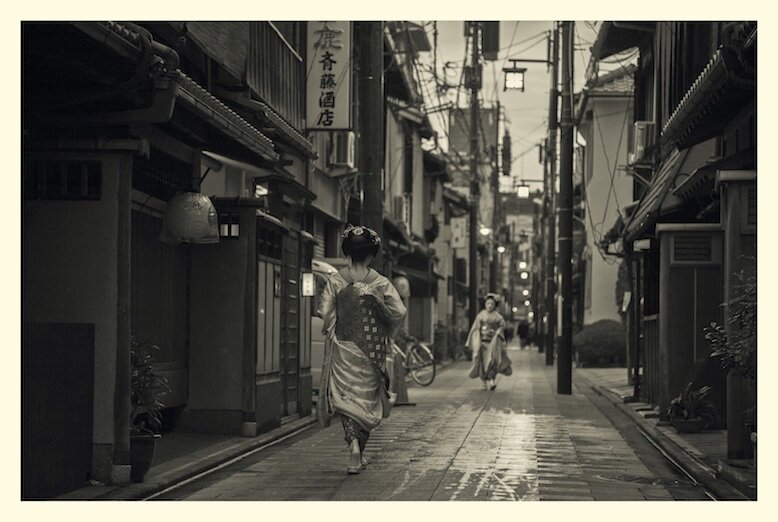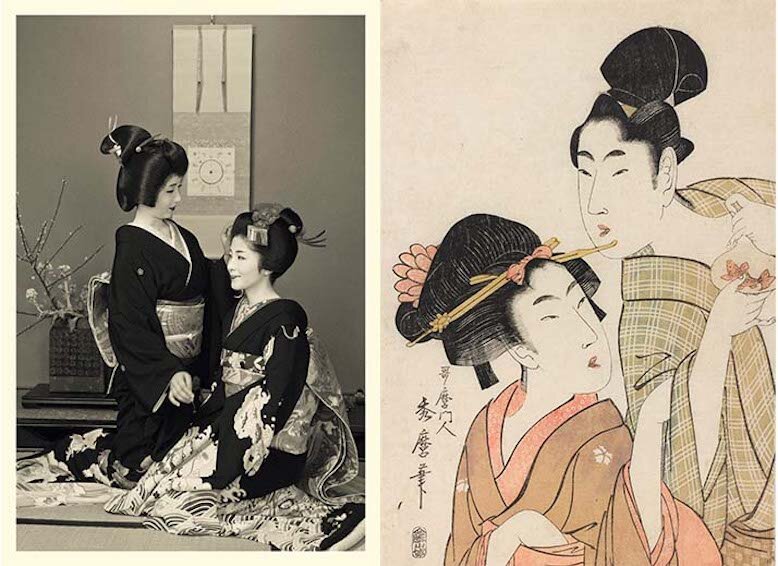When I was a young boy, before I had even heard of the country of Japan, my parents had a framed print of a woodcut on the wall by the bookshelf of the home we lived in. I only have a glimpse of it, now, only as a memory.
It had the classical perspective of a floating, isometric view, as if the viewer was standing on a nearby mountain gazing down. I took it all in; the muted colour, the sparse rooms, the men and women of another time sitting serene in angular kimonos. I felt the immanent mystery of their world. What, exactly, were their lives like? What were their hopes, their dreams?

Utagawa Kunisada II's The Fifth Month from the series The Five Festivals Represented by Eastern Genji dated 1855. (Photo courtesy of Nakau Collection)
I do remember very clearly the sense of mystery that the print left me. Very recently, during a visit to the Asian Civilisations Museum, I found myself a trace of that feeling looking at the ukiyo-e woodblock prints, surrounded by the collection of the museum’s relics — cups, scabbards, statues — all things that have a hint of adventure at a time other than now.

Kagai life in Miyagawa-cho, Kyoto, Higashiyama Ward photographed in 2010. (Photo courtesy of Russel Wong)
The prints are part of a double bill exhibit, titled, " Life in Edo | Russel Wong in Kyoto ". This exhibit is in commemoration of the 55th year anniversary of Singapore-Japan diplomatic relations. The exhibit has prints on one end and photographs by Russel Wong on the other.

(Left) Geiko Sayaka helping Maiko Satsuki with her kanzashi (hair ornaments) in Kyoto photographed in 2011. (Photo courtesy of Russel Wong). (Right) Kitagawa Hidemaro's Young couple with goldfish dated 1804-18. (Photo courtesy of Nakau Collection).
Russel Wong has, for over a decade now, been capturing the faces of those that are captivated by the mystery of tradition, young women who make their journey towards certain streets in Gion, Kyoto, to begin their journeys as geishas.
Being a geisha is multi-disciplinary. They play musical instruments, dance and sing, but they are also simply performing by being geisha. This is to possess the fragile spirit of mystery itself. One, as a geisha, must be elegant in a moment, and also, all the time.

Geiko Sayaka in Kyoto dated 2014 in large format, combining 4 x 4 prints in ōban size. (Photo courtesy of Russel Wong)
Russel Wong gives a glimpse into their complex, hierarchal ceremonies and esoteric rules. There are also candid moments taken from a respectful distance — a smile here, a glance there, flickers of an expression that belong to a deeply personal journey beyond the mask of their performative lives.






